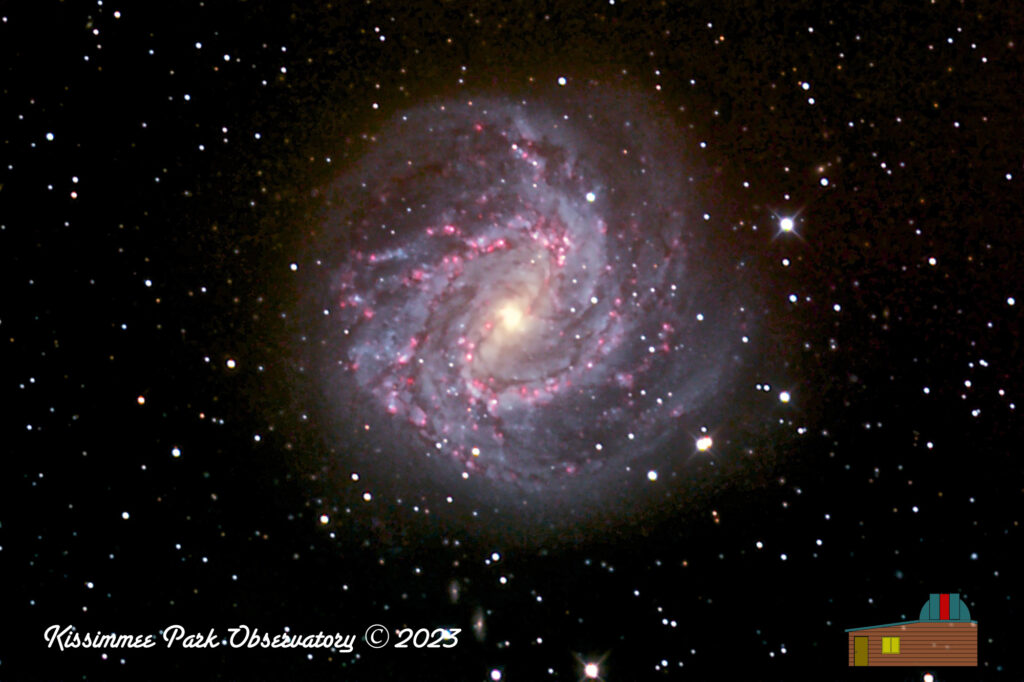M 83, also known as the Southern Pinwheel Galaxy, is a stunning barred spiral galaxy located in the constellation of Centaurus. It is one of the closest and brightest galaxies visible from Earth, making it a popular target for astronomers and amateur stargazers alike.
The galaxy is approximately 15 million light-years away from Earth and has a diameter of about 55,000 light-years. It was first discovered by French astronomer Nicolas Louis de Lacaille in 1752, and has since been studied extensively by astronomers around the world.
One of the most striking features of M 83 is its spiral arms, which are filled with bright clusters of young stars and glowing gas clouds. These arms are thought to have been formed by the gravitational interactions between the galaxy’s stars and gas, causing them to clump together and form these beautiful structures.
Another fascinating aspect of M 83 is its active star-forming regions. These areas are marked by the presence of large, bright nebulae where new stars are being born. These regions are incredibly important for astronomers studying the formation and evolution of galaxies, as they provide valuable insights into the processes that drive star formation.
M 83 is also home to a supermassive black hole at its center, which is thought to have a mass of around 40 million times that of the Sun. This black hole is surrounded by a bright disk of gas and dust, which is being consumed by the black hole’s immense gravitational pull.
Despite its beauty and popularity among astronomers, M 83 is not a static object. Like all galaxies, it is constantly evolving and changing over time. It is estimated that M 83 has undergone several major mergers with other galaxies in the past, which have likely played a role in shaping its current structure and appearance.
Overall, M 83 is a fascinating and beautiful object in the night sky, with much to offer astronomers and stargazers alike. Its stunning spiral arms, active star-forming regions, and supermassive black hole make it a truly unique and captivating object to study and admire.
Click on the image to view a larger version that you can explore.
Image Info
- Imaged from the KPO field, in Saint Cloud, Florida
- Camera : ZWO ASI1600MM Pro
- Scope: Orion RC-12 Ritchey-Chretien Astrograph, 2450mm fl, F/8
- Mount: iOptron CEM-120
- Hydrogen Alpha: 10 subframes of 300s = 50 min integration
- Red: 12 subframes of 300s = 60 min integration
- Green: 12 subframes of 300s = 60 min integration
- Blue: 12 subframes of 300s = 60 min integration
- Luminance: 37 subframes of 300s = 185 min integration
- Total integration time: 415 min = 6.9 hours.
- Captured via ASIAir Pro automation
- Optical tracking via ASIAir automation via the ASI120MM-S guide camera
- Separate channels stacked and LRGB integrated in Astro Pixel Processor
- Image cropped, stretched, and noise processed in Nebulosity.
- Image run through Topaz Denoise AI
- Final processing in Aperture

